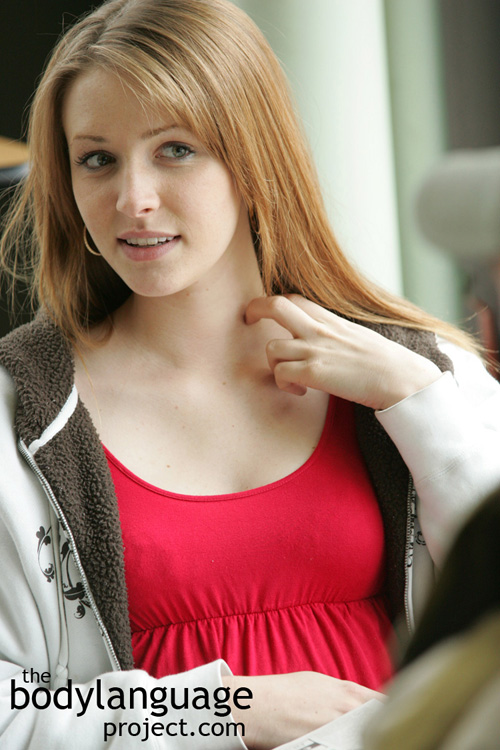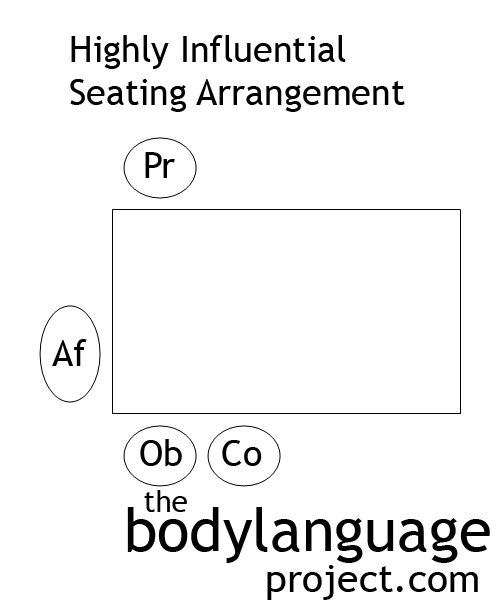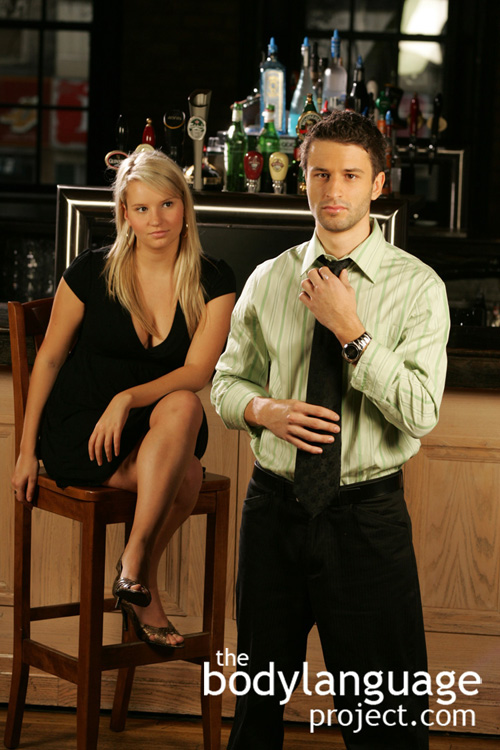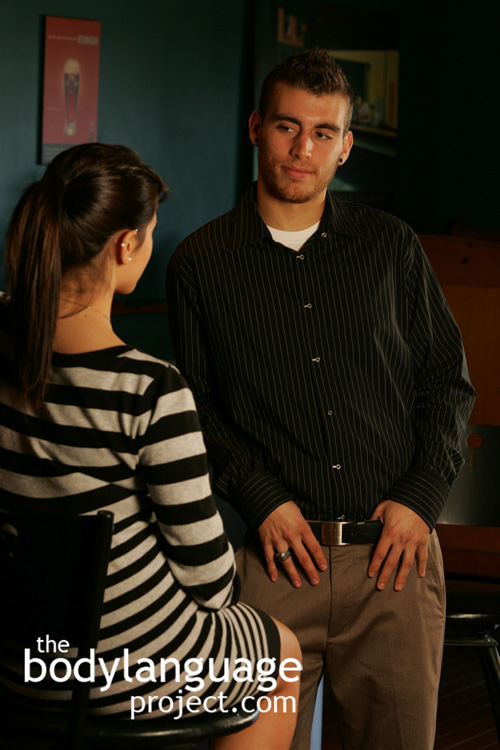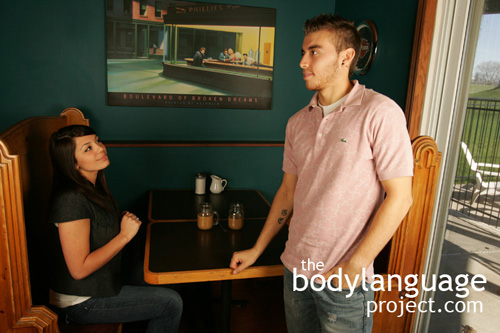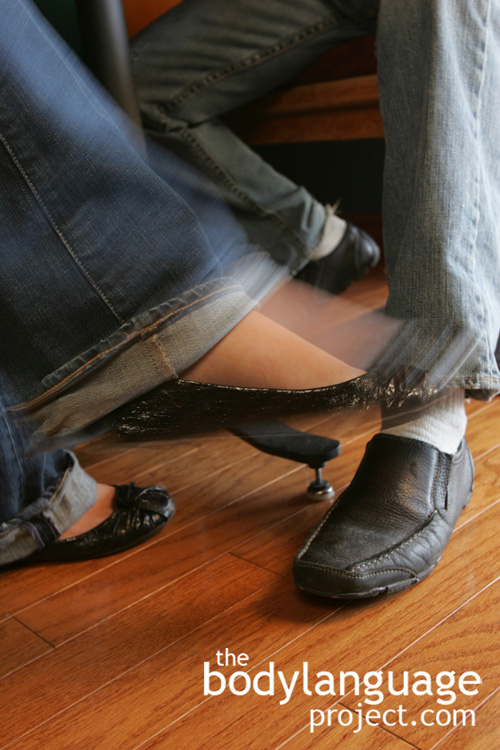When someone utters words such as “I completely agree with you, that sentiment is bang-on” but then punctuates the sentence with a neck scratch, it might mean that they in fact believe the opposite. Scratching the neck when no itch is present is a way to displace some of the nervous energy created by the lie and so distracts them from the pain of their dishonesty. Usually, the neck is scratched about five times, usually exactly. It seldom happens more than this, and rarely less. The collar pull is another form of self touching that is related to the neck. In this case, the idea is to reduce friction causes by an increase in blood flow to the neck. When stress increases, our face and necks flush with blood and we pull our collar away as an unconscious indication of this process. As blood flow increases to our neck, it stimulates nerves which in turn cause irritation and discomfort. Other times, the collar pull is a way to release heat created by our bodies while under pressure and discomfort from a neck that has become moist due to sweating.
Tag Archive for Face
Increased Face-Touching
by Chris Site Author • March 6, 2013 • 0 Comments

Unnecessary face touching shows emotional discomfort. When in the right context, it can signal a lie.
Self touching is one thing we habitually associate with liars. They touch their chin, neck, nose, ears or will pull their collar away from their neck. These traits are of course related to nervousness and the mistake we sometimes make is directly associating nervousness with lying. As we have seen, not all liars are nervous. Let’s break this category down a little more.
How To Set Up Your Office
by Chris Site Author • March 6, 2013 • 0 Comments
The desk is the most important piece of furniture and it’s found in all offices. The area behind the desk always forms the private area where only the desk owner is permitted. This is his sanctuary which he protects. Those with desks facing in toward an open space with their backs to a wall have the most amount of status. Having your back against the wall protects you from a theoretical sneak attack or from having others watch you as you work. Low ranking workers will usually work in areas that afford them little privacy and hence be found in wide open areas [click images to enlarge – not all data is visible].

The area behind the desk is considered private. Facing the door with the back to the wall is the most powerful position as it permits seeing people enter.

Low ranking employees are forced to face the wall so the boss can watch them work without being noticed himself.

A low rank desk arrangement because it leaves the employees back exposed to whomever is entering through the door.

An extremely low status desk arrangement because it would be impossible to guard against someone entering through the door.

This arrangement is meant to maximize the amount of private space claimed by the owner. Any area from the edge of the door across the front of the desk to the bookcase and behind are claimed as reserved for the owner’s needs.
Other Complex Seating Arrangements
by Chris Site Author • March 6, 2013 • 0 Comments
It is possible to create a highly influential seating arrangement when we wish to influence a particularly important, but as yet undecided individual. The first person or the main presenter (Pr) should sit head-on with the “object” in the face-to-face competitive position (Ob). This competitive position aligns the “object” with the person he most expects to object with. Next, we add an affiliate (Af) to the objects left or right, that is, at the casual corner position to act as a friend, or to their side in the cooperative position (Co). The subconscious effect can be powerful if the positions are matched with the outlooks they should hold. That is, the cooperative position should play the advocate against the competitive position in cooperation with the object, except (of course) showing a bias towards agreement with the competitive position.
The affiliate can also “bait” the competitive position and control the conversation by giving up relevant points without sounding pushy. This person can demonstrate ‘the other side of the coin’ and work through the dialogue saving the object from having to voice negative positions himself. This saves him from going through counterproductive mental reasoning that can prove a damaging exercise. Powerful negotiators can use the affiliate to blow the argument out of proportion thereby forcing the object to side with the competitor and bridge the original argument. Obviously this isn’t a simple strategy and requires some advanced preparation, but when it is an important matter it is justified, not to mention fun!
Casual Corner Position
by Chris Site Author • March 6, 2013 • 0 Comments
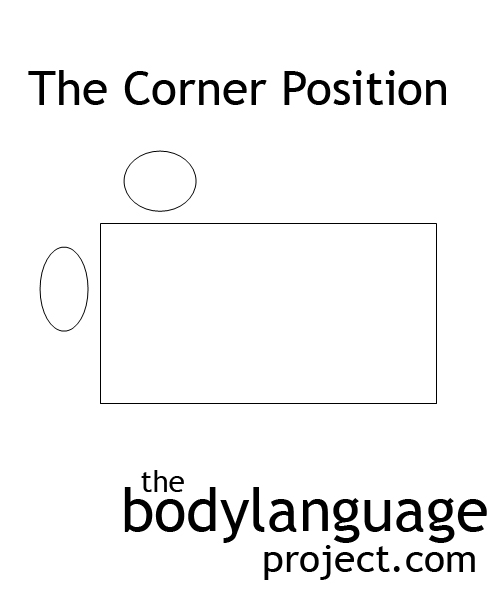
The “casual corner” seating arrangement is best in business as it the table provides are partial barrier, yet does not prevent people from interacting together effectively.
The casual corner position is most appropriate to preserve closeness between people, but at the same time offers a partial barrier. The barrier in this case, is the corner of the table. If chairs are directly facing the table, it avoids direct eye contact, but if preferred, the chairs can face one another across the corner of the table to make sharing of information easier. This seating position is unique because it neatly allows for independent thought, but the proximity still permits intimacy.
When presenting new information to a client or trying to “sell them”, this is the most preferred orientation. It is also a useful way to conduct an interview without coming off as aggressive or competitive. In studies when students were asked to choose a seating arrangement that permitted conversation, this was the most often chosen arrangement.
Dominant Body Language
by Chris Site Author • March 6, 2013 • 0 Comments
Establishing dominance and status are the main messages men deliver to establish attraction with women and there are a variety of methods to do so. Fashion is one aspect of status and it includes expensive watches and suites, polished shoes and being well groomed. Status also comes across through body language. Open postures, legs spread apart, arms uncrossed and keeping the hands away from the face. Alpha men display alpha traits because life has treated them well. Good posture also shows that life hasn’t taken advantage of him and the weight of the world isn’t holding him down.
The torso’s of dominant men is firm and still, they will use their arms to punctuate points, but keep them relatively inactive. Dominant men only rarely raise their arms above the level of their belt. Speaking slowly with a calm voice also shows dominance. The fewer words used, the more emphasis is placed on what words are used. Instead of rambling on, men should use more pauses and allow their minds to catch up. Alpha men speak slowly, almost carefully. They choose their words wisely and avoid fillers such as “ummm” and “ahhh.” Taking up space is also part of dominant body language. Having the arms spread wide while on a sofa and the legs apart gives the impression that men are relaxed and also larger than they actually are.
What To Mirror To Gain Favours
by Chris Site Author • March 6, 2013 • 0 Comments
Proper mirroring is far from the game we play as children. The goal of kid’s is to irritate their opponent with exact copying of gestures even expressions and word, whereas the goal of adults is to formulate agreement and rapport. In adults, necessarily, more subtle mirroring must follow. In the experiments listed above, the researchers set to mirror only those actions which occur subconsciously, those that happen out of normal awareness. Movements such as foot shaking, body scratching, face or hair touching or changes in posture are good ways to start the mirroring process. Your goal should always be to avoid getting caught consciously mirroring someone else since being detected will create negative feelings more so than if no mirroring was done at all. Motions such as leaning in, crossing legs and folding arms can also be used, but must be done with caution since these are much larger motions and can be more easily detected.
Echoing which is like mirroring where similar body postures are replicated, but of which happen sometime later, is a technique that makes the rapport building process more subtle. In echoing, postures and gestures are not concurrent with what is going on with others, but instead happen after some time has elapsed. To be effective, echoing happens within thirty seconds to a minute of separation, but can even happen with several minutes of separation, where only subtle rapport is felt.
Where body positions are fluent, yet echoed, and bodies seem to jive as if in an elaborate dance and where conversation flows smoothly we find “total synchrony.” We say that these people are on the same “wavelength.”
Some ways we mirror with our bodies:
[A] Shifting weight from one foot to the other foot or keeping the weight on the same foot.
[B] Leaning on a bar top or up against a wall or other structure.
[C] Crossing the legs in the same direction or opposite direction when facing each other.
[D] Keeping the legs uncrossed.
[E] Gesturing with the hands similarly.
[F] Drinking in unison or holding drinks with the same hand.
[G] Placing both hands, or just one hand, on the hips.
[H] Leaning in, or leaning out.
The Cowboy Pose
by Chris Site Author • March 5, 2013 • 0 Comments
The cowboy pose happens by placing the thumbs in the belt loops with the remaining fingers pointed downwards towards the crotch. Popularized by old western movies cowboys would use a combination of this posture and the hands-on-hips (or gun) posture to show how macho they were. Because it draws attention once again to the crotch, it is rarely used by women. Women tend to have to use less aggressive, yet more sensual means to show off, such as thrusting their chest outward by rolling their shoulders back, or parting the legs slightly leaving them uncrossed. When amongst other men, the cowboy pose says that they are unafraid and can dominate. This posture is tolerable as a dominance display in men because it lacks the pompousness we can sometimes find coming from in-your-face displays. The cowboy pose is equal to the figure-four-leg cross with respect to perception by others and use acceptability. This not withstanding, the posture still needs to be used with caution.
The Legs and Feet Tell About Where The Mind Thinks
by Chris Site Author • March 5, 2013 • 0 Comments
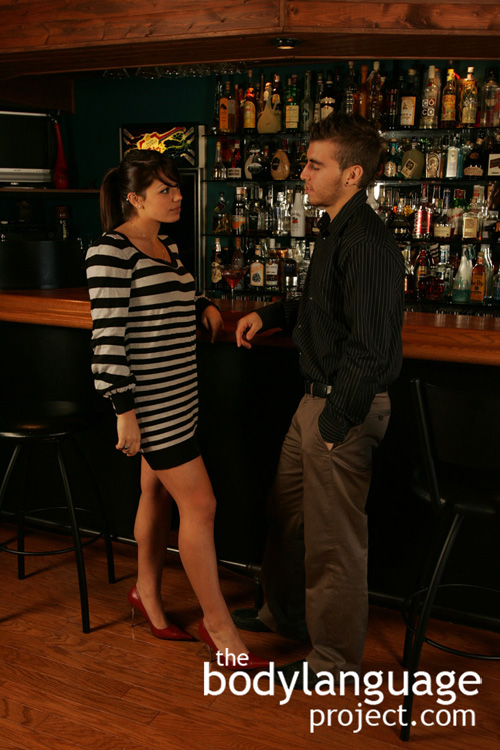
Our toes point to where our mind thinks. Extending our foot in the direction of another person shows we’re thinking that way.
The legs and feet are excellent predictors about what our minds and bodies wish to do, but haven’t yet had the motivation to implement. Just like fingers can and do point when directing the attention of others, so too, can the feet. As it applies to the feet, however, the signal is leaked by accident, rather than on purpose. Our feet lead us everywhere we go, but even while seated they tell others the direction we plan to head once the right circumstances or opportunity presents itself. If you want to know if someone really likes you and is interested in fully inviting you in for discussion, just watch their feet. While seated, if they just swivel their hips in your direction, but keep their feet planted facing away from you, then you know that they aren’t totally immersed. This is likely so because we’ve been programmed by our culture to be polite, so we do our best to engage other people, even if we do it in jest. How rude would it be to point our bodies away from someone who wishes to speak with us? No doubt, this too happens, but is much more obvious and so requires less skill in reading.
This sort of orientation is universal across interactions, the hips up will orient to face whoever is speaking with us, but what happens below, is subject of true interest. Studies covering courtroom behaviour has shown that when juries don’t like a particular witness they will orient their feet toward the door or nearest exit, while the rest of their bodies politely face the witness. As the strength of conversations wax and wane, feet will engage and disengage. This is why we say that interested people put their “whole body into the conversation.” If you can engage them in interesting dialogue then you’ll be able to have them reorient their feet toward you and perhaps even extend a foot in your direction. If you notice feet being moved toward an exit or away from you, try to decipher the cause, as this will tell you why they’ve become disinterested. Disinterest can be for any number of factors, including hearing something offensive, disinterest in the topic or conversation as a whole, or even being late for an engagement. The feet won’t tell you why someone is disinterested, only that someone is disinterested.
As we saw in the previous section, leg crossing predicts relationships since we tend to cross towards our spouses, and our dates, but legs and feet can also cross toward someone we feel is attractive. While we might not physically take steps in the direction of our interest due to shyness, or perhaps because we are already committed, our feet are permitted to do so because it is less obvious to others. Besides, feet pointing does not always guarantee that anything proactive will ever take place. In other words, the feet just point to where we wish to be, but won’t necessarily ever get to.
In stressful situations that people wish to avoid like waiting to see the dentist or doctor, we’ll see toes pointing to the exit. Other times we see prominent toe pointing is when someone wants to end a conversation. It can be annoying to have to do multiple good-bye sequences with someone who seems to have nothing better to do than to ramble on. So instead of reorienting your body toward them, instead aim your feet and shoulders toward the exit. If that doesn’t speed things up or send a clear message, make it more obvious by widening the gap by stepping away.
Legs and feet can also become jittery and fidget when a person is bored and wants to leave. Jittery though can also be due to nervous energy or even the result of happiness such as “happy feet.” It is the context that will help decide what feet and legs are telling in this type of body language.
Looking Askance And Eye Rolling
by Chris Site Author • March 5, 2013 • 0 Comments
Looking askance is a nonverbal cue that is done with the eyes and head in combination. It is done by tilting the head slightly to the side but stopping short of facing head on where the eyes roll the rest of the way forming a scowl. This face shows disapproval, distrust and suspicion. This cue is commonly associated with a disapproving mother type although this is usually in its exaggerated form. Other times the gesture happens quickly as if to say “You didn’t just say that, you better start backpedaling” or “I’ve heard what you said loud and clear, but I’m not buying what you’re selling.” Eye rolling, on the other hand spells disbelief as in “I can’t believe you just said this, you are a fool.”

